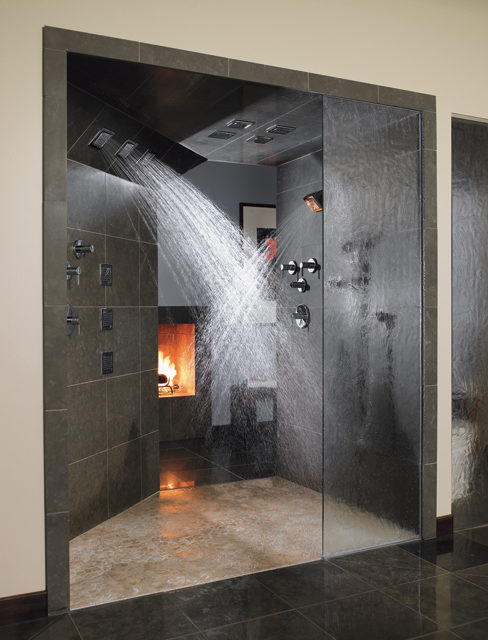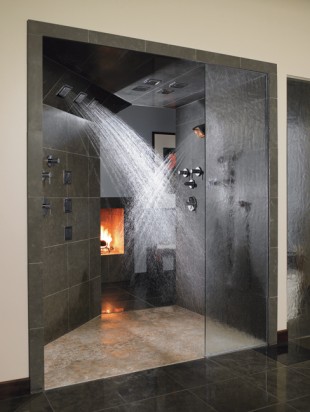BY DALE BURG
If you’re planning a do-over of your bathroom to make it more attractive and functional, you can feel comfortable about justifying the expense. Experts say you should recoup 80 percent or even more—when you eventually sell your house.
What you’ll actually spend on a remodeling is pretty much up to you. “In bathroom and kitchen construction, the costs can vary wildly. You can spend a huge amount or keep your budget very modest,” says Charles McQueary of A Better Way Constructing.
How do you begin the process of finding exactly what you want? Start by looking through magazines to explore the options in fixtures, floors, walls, and finishes. Visit Lowe’s and Menard’s, and, if you’re on a more flexible budget, Lee Supply.
Once you have some notions to start with, go to your designer or architect to discuss the specifics. “The products we work with are so intricate, and come in so many sizes, that everything needs to be worked out in advance,” advises Larry Routen of Lifestyle Kitchen & Bath. “Most mistakes come from not having a plan. It’s like playing with dominos. If you do this, you can’t do that. One change can make all the blocks fall down.”
Since bathroom areas are small, McQueary notes, if you fall in love with a tile that costs $15 rather than $5, it won’t make that much difference to your bottom line. And Routen points out that some high-end products cost more not just because of design but because the parts, like valves, are of better quality.
New technologies have made luxurious amenities like heated towel bars and heated floor tiles more affordable and more appealing, especially to those who see the bathroom as a personal retreat. One exciting new bathroom category is the performance shower, with such features as body sprays, rain showers, and digital thermostatically controlled valves that can be programmed to deliver each user’s preferred temperature and spray pattern.
Professionals can help you decide where—and where not—to economize. For example, McQueary strongly recommends that when you put in a new tub, you replace the shower control valve and faucet because gaining access to replace them later is an expensive proposition. He further suggests having tile affixed to Durock, rather than drywall, so it won’t pop off, and notes that if you install tile all the way up to the ceiling, not stopping (as builders often do) at the point where the shower head comes out of the wall, you won’t have to paint in the future.
Both Routen and McQueary estimate that a bathroom makeover will cost upwards of $4,000 to $5,000 and that it takes about ten working days to redo a typical bathroom.
For additional help anticipating costs and design possibilities, Routen, who is certified as a designer by the National Kitchen and Bath Association, recommends that you check its website (nkba.org) and that of Kohler, the fixtures manufacturer (kohler.com).












